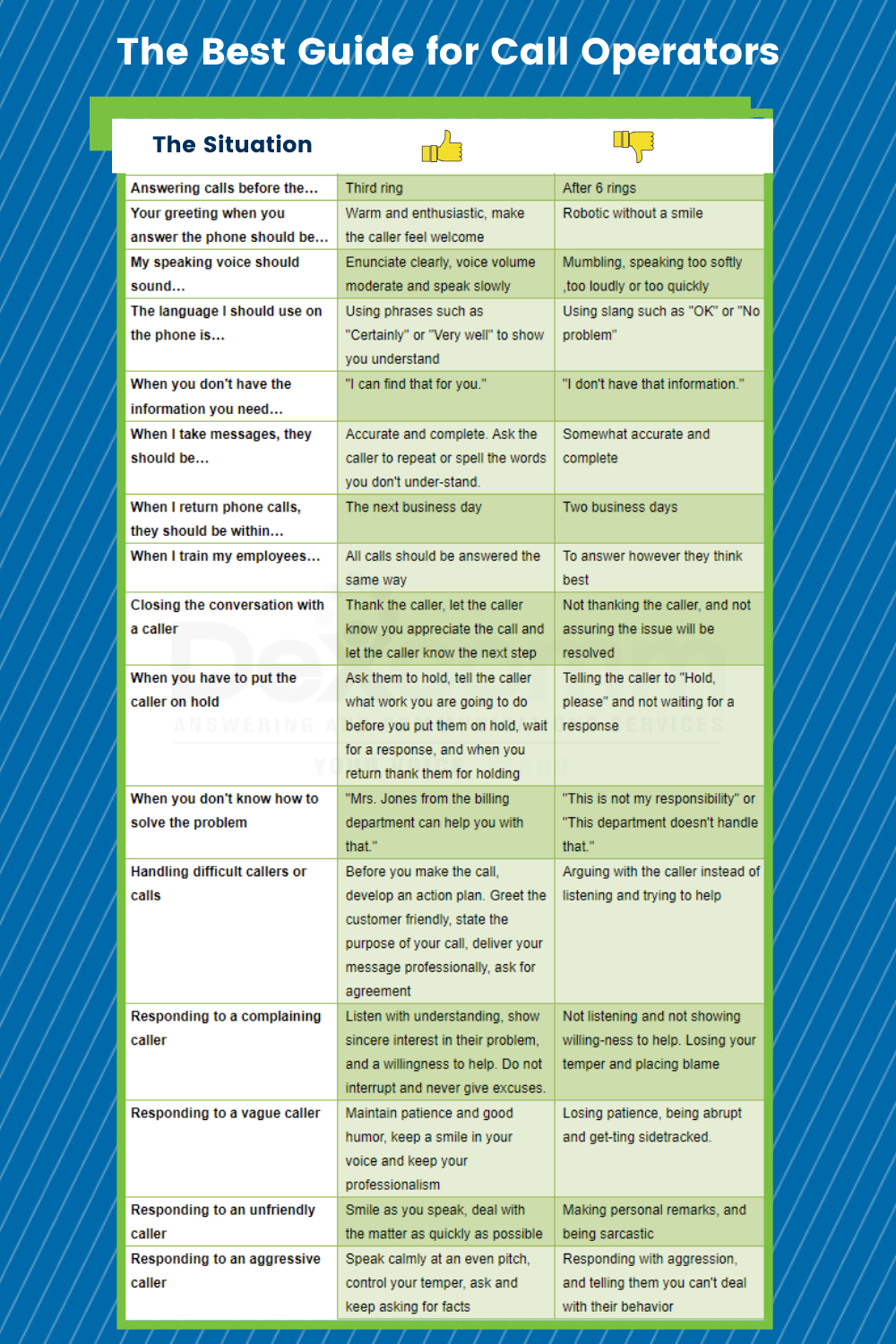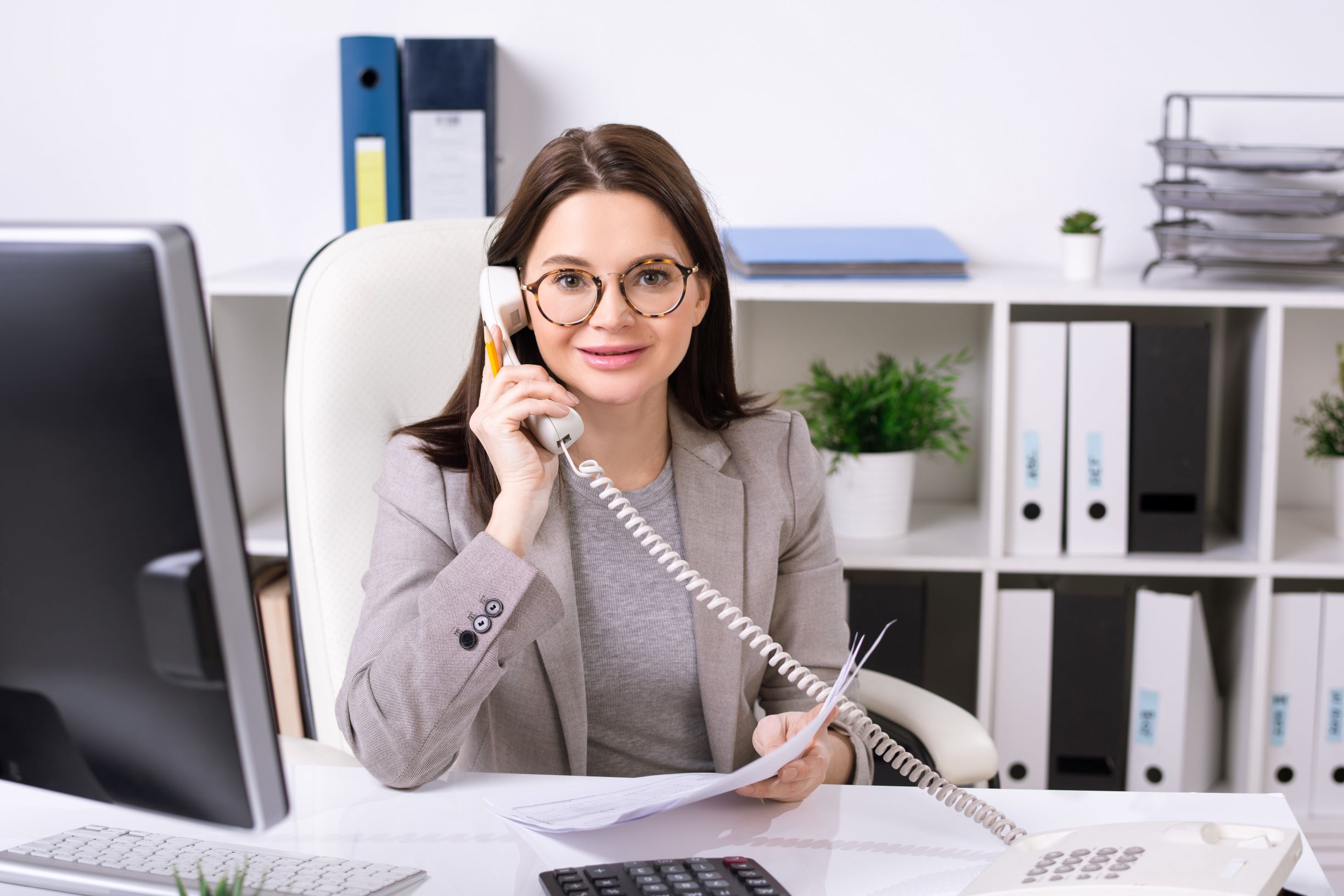All Categories
Featured
Table of Contents
- – Where To Buy Best Telephone Answering Service: ...
- – A Best Telephone Answering Service: What It Is...
- – What Is The Best How Outsourced Phone Answerin...
- – What Is The Best 24/7 Phone Answering - Au-ba...
- – What The Best Outsource Answering Services In...
- – Which Is The Best Telstra Voice Features & S...
Where To Buy Best Telephone Answering Service: What It Is And Why It Isn't Enough
This device and its successors were developed by Sava Jacobson, an electrical engineer with a personal consulting company. While early voice mail used magnetic tape innovation, most contemporary devices utilizes solid state memory storage; some gadgets use a mix of both, with a solid-state circuit for the outbound message and a cassette for the incoming messages.
"toll saving" below) (phone answering service). This is helpful if the owner is screening calls and does not want to consult with all callers. In any case after going, the calling celebration should be notified about the call having actually been addressed (in many cases this starts the charging), either by some remark of the operator, or by some welcoming message of the little bit, or addressed to non-human callers (e.
This holds specifically for the TADs with digitally stored welcoming messages or for earlier makers (prior to the increase of microcassettes) with a special unlimited loop tape, different from a second cassette, committed to recording. There have actually been answer-only devices without any recording abilities, where the greeting message had to notify callers of a state of current unattainability, or e (virtual telephone answering service).
A Best Telephone Answering Service: What It Is And Why It Isn't Enough

about availability hours. In recording Littles the welcoming normally includes an invite to leave a message "after the beep". An answering maker that uses a microcassette to tape-record messages On a dual-cassette answerphone, there is an outbound cassette, which after the specified variety of rings plays a pre-recorded message to the caller.

Single-cassette voice mail consist of the outgoing message at the beginning of the tape and incoming messages on the staying area. They first play the statement, then fast-forward to the next offered area for recording, then record the caller's message. If there are lots of previous messages, fast-forwarding through them can cause a considerable hold-up.
This beep is frequently described in the welcoming message, requesting that the caller leave a message "after the beep". Littles with digital storage for the recorded messages do not reveal this delay, of course. A little may provide a push-button control facility, where the answerphone owner can call the home number and, by going into a code on the remote telephone's keypad, can listen to taped messages, or erase them, even when far from house.
What Is The Best How Outsourced Phone Answering Service Can Help Your ... To Buy In 2023?

Thus the maker increases the variety of rings after which it answers the call (normally by two, resulting in four rings), if no unread messages are currently stored, however responses after the set variety of rings (normally 2) if there are unread messages. This allows the owner to learn whether there are messages waiting; if there are none, the owner can hang up the phone on the, e.
Some machines also permit themselves to be remotely activated, if they have been switched off, by calling and letting the phone ring a specific big number of times (usually 10-15). Some service suppliers desert calls already after a smaller sized variety of rings, making remote activation difficult. In the early days of Little bits an unique transmitter for DTMF tones (dual-tone multi-frequency signalling) was regionally required for push-button control, considering that the previously employed pulse dialling is not apt to communicate suitable signalling along an active connection, and the dual-tone multi-frequency signalling was carried out step-by-step.
Any incoming call is not identifiable with regard to these homes in advance of going "off hook" by the terminal devices. So after going off hook the calls should be switched to proper devices and only the voice-type is instantly accessible to a human, however perhaps, however ought to be routed to a LITTLE (e.
What Is The Best 24/7 Phone Answering - Au-based Operators - Alltel Australia To Get Right Now
What if I told you that you do not have to in fact pick up your gadget when answering a customer call? Someone else will. So convenient, ideal? Answering telephone call does not require someone to be on the other end of the line. Efficient automated phone systems can do the trick simply as effectively as a live agent and often even better.
An automatic answering service or interactive voice action system is a phone system that communicates with callers without a live individual on the line - call answering services. When business use this technology, customers can get the answer to a concern about your business just by using interactions set up on a pre-programmed call circulation.
Although live operators upgrade the consumer service experience, lots of calls do not require human interaction. A simple recorded message or guidelines on how a consumer can obtain a piece of details normally resolves a caller's immediate need - phone answering service. Automated answering services are a simple and efficient method to direct incoming calls to the right individual.
What The Best Outsource Answering Services In The Usa - Start From $11/hr Brand To Buy
Notice that when you call a business, either for support or item query, the first thing you will hear is a pre-recorded voice greeting and a series of options like press 1 for customer support, press 2 for queries, and so on. The pre-recorded choices branch off to other choices depending on the customer's selection.
The phone tree system helps direct callers to the best person or department utilizing the keypad on a smart phone. In some instances, callers can utilize their voices. It's worth keeping in mind that auto-attendant options aren't limited to the ten numbers on a phone's keypad. When the caller has actually selected their very first alternative, you can develop a multi-level auto-attendant that utilizes sub-menus to direct the caller to the ideal type of support.
The caller does not need to interact with a person if the auto-attendant phone system can manage their issue. The automated service can path callers to a staff member if they reach a "dead end" and need assistance from a live agent. It is pricey to hire an operator or executive assistant.
Which Is The Best Telstra Voice Features & Services - Home Phone Company?
Automated answering services, on the other hand, are considerably more economical and supply substantial expense savings at an average of $200-$420/month. Even if you do not have actually dedicated staff to deal with call routing and management, an automatic answering service enhances efficiency by allowing your team to concentrate on their strengths so they can more effectively invest their time on the phone.
A sales lead routed to client service is a lost shot. If a consumer who has item questions reaches the wrong department or gets insufficient responses from well-meaning staff members who are less trained to handle a specific kind of concern, it can be a cause of disappointment and dissatisfaction. An automatic answering system can decrease the number of misrouted calls, thereby assisting your workers make better use of their phone time while maximizing time in their calendar for other jobs.
With Automated Answering Systems, you can develop a personalized experience for both your personnel and your callers. Make a recording of your primary welcoming, and merely update it routinely to show what is going on in your company. You can create as many departments or menu alternatives as you want.
Table of Contents
- – Where To Buy Best Telephone Answering Service: ...
- – A Best Telephone Answering Service: What It Is...
- – What Is The Best How Outsourced Phone Answerin...
- – What Is The Best 24/7 Phone Answering - Au-ba...
- – What The Best Outsource Answering Services In...
- – Which Is The Best Telstra Voice Features & S...
Latest Posts
Proven Auto-attendant Answering Service
Quality Medical Answering Service – Perth
Expert Small Business Answering Service Near Me ( Bendigo 3550)
More
Latest Posts
Proven Auto-attendant Answering Service
Quality Medical Answering Service – Perth
Expert Small Business Answering Service Near Me ( Bendigo 3550)